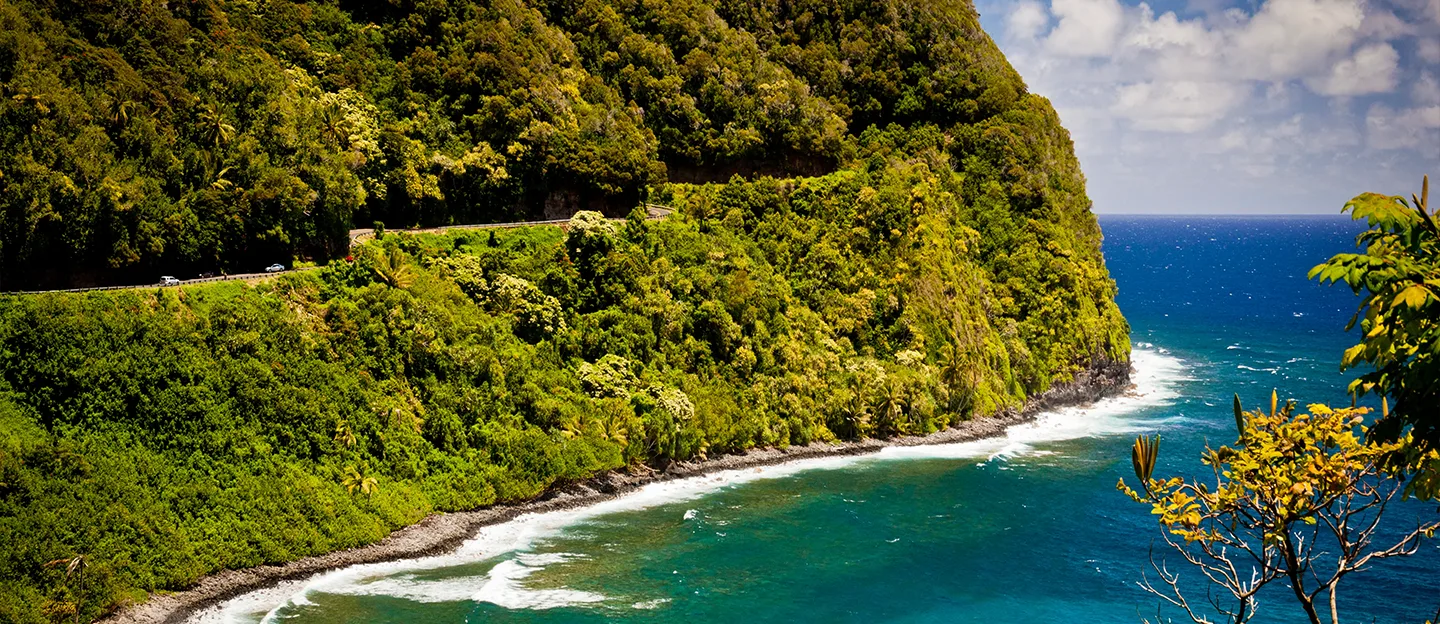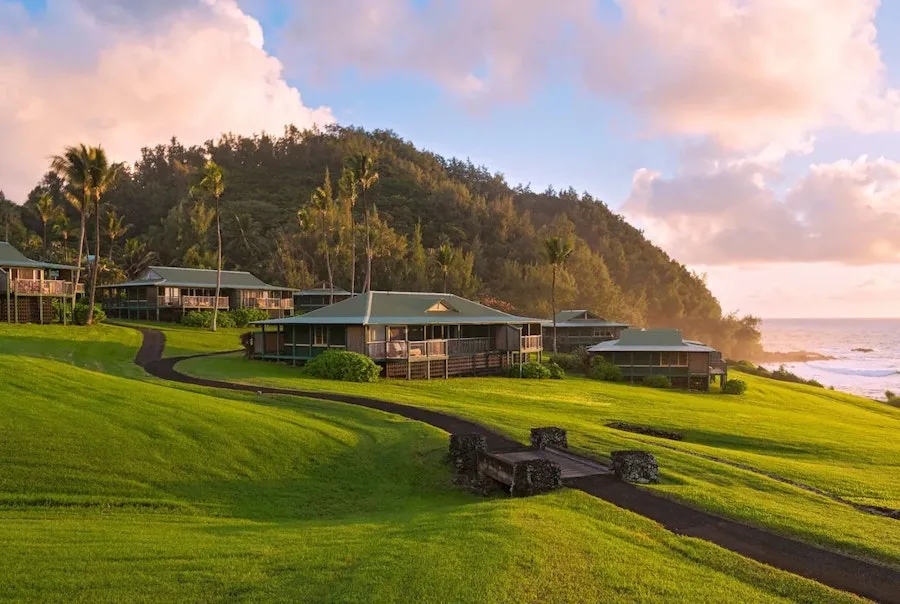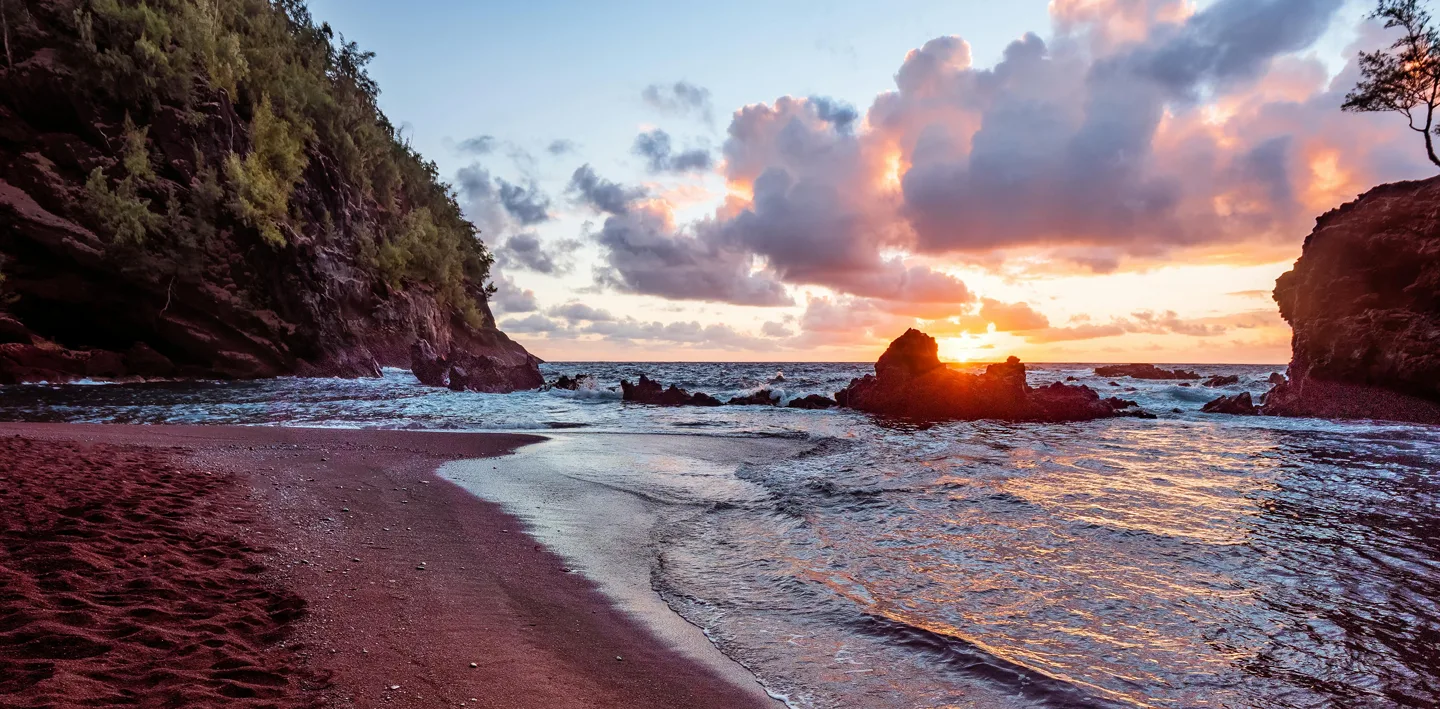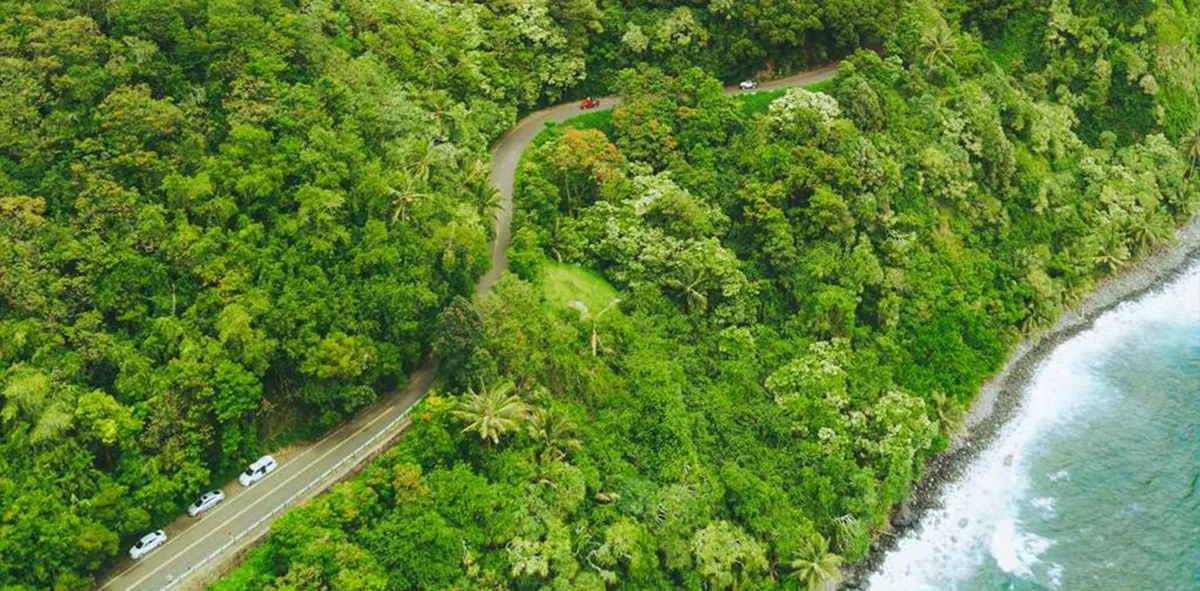If Maui is about slowing down, Hāna is where the clock disappears entirely. Tucked into East Maui’s lush rainforest coastline, Hāna isn’t a stop—it’s a state of mind. Getting there means embracing the famous Hāna Highway, a serpentine 64-mile journey with over 600 curves and nearly 60 one-lane bridges. But the payoff? Untouched waterfalls, quiet black-sand beaches, and a glimpse of Hawaiʻi as it once was. This isn’t the place for resorts or shopping malls. It’s where mango trees hang heavy over the road, locals wave as you pass, and time stretches out in every direction.
The Road to Hāna: More Than a Drive

The experience starts long before you reach town. The Hāna Highway (Hwy 360) winds through bamboo forests, waterfalls, and valleys that look straight out of a movie. Driving it yourself is a rite of passage, but many visitors opt for guided tours so they can focus on the views and stories that bring the route to life.
Must-see stops include:
- Twin Falls: The first major waterfall on the route, perfect for a morning dip.
- Garden of Eden Arboretum: A peaceful, privately maintained botanical garden with sweeping ocean views.
- Wailua Valley State Wayside: A quick stop with panoramic views of taro fields and waterfalls in the distance.
- Keʻanae Peninsula: A historic Hawaiian village known for its taro farming, lava rock coastline, and warm banana bread (seriously, don’t skip Aunty Sandy’s).
Each stop is a chapter in East Maui’s story—and part of the joy is pulling over when the moment feels right.
Arriving in Hāna Town
Unlike the resort-laden coasts, Hāna Town is refreshingly simple. There are no high-rises, no brand-name shops—just a school, a handful of local eateries, a general store, and a deeply rooted Hawaiian community that lives close to the land.
Hāna Bay is the heart of town, a calm cove where outrigger canoes rest on shore and kids swim after school. The adjacent Hāna Cultural Center and Museum offers a glimpse into the area’s rich past, from ancient Hawaiian fishing practices to missionary-era artifacts.
Accommodations here are low-key by design. The Hāna-Maui Resort offers a luxury option that still honors the area’s quiet vibe, while vacation cottages and off-grid retreats let you fully unplug.

Black Sand Beaches and Lava Coastlines
Just south of town lies one of East Maui’s most photographed spots: Waiʻānapanapa State Park. Its black-sand beach—formed from pulverized lava—is framed by sea cliffs, lava tubes, and freshwater caves. Arrive early (and with a reservation) to beat the crowds and hike the Ke Ala Loa O Maui coastal trail for dramatic ocean views.
Further south, Koki Beach and Hamoa Beach offer contrasting personalities. Koki is wild and scenic with red sand cliffs and strong surf—better for photos than swimming. Hamoa, on the other hand, is crescent-shaped perfection. Calm enough for a dip, framed by jungle, and often blissfully uncrowded, it’s consistently rated one of Maui’s top beaches.

Kipahulu: Waterfalls and Sacred Pools
About 30 minutes past Hāna (yes, the road continues), you’ll reach Kīpahulu, part of Haleakalā National Park. This remote district is home to the famous ʻOheʻo Gulch, often called the “Seven Sacred Pools.” When conditions are right, a series of cascading waterfalls and pools flow down to the ocean, creating a natural playground surrounded by rainforest.
The Pīpīwai Trail, a 4-mile roundtrip hike, is one of the best in the islands. It leads through a towering bamboo forest to the 400-foot Waimoku Falls—an awe-inspiring finale that makes every step worth it.
What to Know Before You Go
Hāna isn’t about convenience—it’s about connection. Expect patchy cell service, limited gas stations, and early closing times. But that’s part of the charm. Pack snacks, respect local property, and drive with aloha. Don’t honk around corners. Yield on one-lane bridges. And if someone’s in a hurry behind you, pull over and let them pass. Life moves differently here, and that’s the point.
When to Visit East Maui
Winter (Dec–Mar): Expect frequent rain and fast-changing weather. The waterfalls are roaring, but the road can be slippery—drive cautiously.
Spring (Apr–May): A sweet spot for sunshine and blooming tropical flowers without heavy crowds.
Summer (Jun–Aug): Drier, warmer, and ideal for swimming at Hamoa or exploring coastal hikes.
Fall (Sep–Nov): One of the quietest times to visit, with cooler temps and a peaceful atmosphere.

Essential Hāna Travel Tips
- Reservations are required for Waiʻānapanapa State Park—book in advance online.
- Drive with care: The road is beautiful but narrow and winding. Start early and don’t rush.
- Pack layers: Rain showers come and go quickly. Lightweight jackets and reef-safe sunscreen go a long way
- Support local: Buy banana bread, fruit, or crafts from roadside stands—they help keep the community thriving.